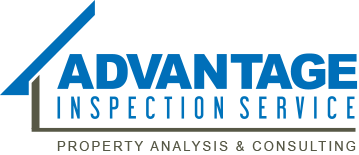Glass is now being widely used for light, beauty, and openness in our spaces. But when it breaks, it can also bring danger. That’s why safety glass has become a must-have feature in both residential and commercial buildings.
If you are going to handle glass installation at your place or buy a space with glass work, understand the safety glass requirements and window tempering codes. These are essential for both compliance and protection.
Why Safety Glass Matters More Than Ever
High heat and rapid temperature changes in Phoenix can stress standard glass. So the tempered and laminated glass aren’t just luxury upgrades; they’re safety essentials.
Benefits of Safety Glass:
- Injury Prevention: Tempered glass, also known as toughened glass, is heat-treated to break into small, blunt pieces instead of dangerous shards.
- Enhanced Security: Laminated glass includes a clear interlayer that holds fragments in place, making it harder for intruders to break through.
- Energy Efficiency: Modern coatings reflect infrared heat and block UV rays, helping your home stay cool and reducing energy bills.
- Code Compliance: Both residential tempered glass and storefront tempered glass requirements are part of Arizona’s safety regulations, especially in areas prone to impact or human contact.
How Safety Glass Works
Here’s a quick breakdown of the main types of safety glass used in homes and commercial spaces.
Tempered Glass – The “Toughened” Type
Tempered glass is heated to over 1,100°F and then rapidly cooled. This process creates tension that makes it four to five times stronger than regular glass.
- Used In: Doors, shower enclosures, patio doors, and commercial storefronts.
- Safety Feature: Shatters into small pebbles instead of sharp shards.
- Note: It cannot be cut after tempering, so all cutting and edge work must be done before the process.
Laminated Glass – Strength with Structure
Made by sandwiching two or more panes of glass with a plastic interlayer (such as PVB), laminated glass holds together when shattered.
- Used In: Skylights, car windshields, high-rise windows, and storm-resistant glazing.
- Additional Benefits: Reduces noise, blocks up to 97% of UV rays, and boosts security.
Wired Glass – Built for Fire Safety
With thin metal wire embedded inside, wired glass prevents shards from falling out during a fire.
- Used In: Fire-rated doors and stairwell enclosures in commercial buildings.
Commercial Building Code Requirements for Tempered Glass
Phoenix follows the International Building Code (IBC) and Arizona State glazing standards, which require safety glass in “hazardous locations.”
Examples include:
- Doors and adjacent panels
- Windows near floors or stairways
- Storefronts and commercial glass doors
- Glass in bathrooms, pools, and showers
For storefront tempered glass requirements, commercial properties must ensure all entry doors, side panels, and lower windows use tempered or laminated glass certified under ANSI Z97.1 and CPSC 16 CFR 1201 standards.
These standards define impact resistance and shatter safety, ensuring that businesses meet both performance and legal obligations.
Residential Tempered Glass Requirements in Arizona
If you’re a homeowner, safety glass isn’t optional in certain areas. Residential tempered glass must be installed in:
- Shower doors and tub enclosures
- Windows near floors (within 18 inches of the ground)
- Stairway and railing panels
- Glass near entry doors or within 24 inches of a door edge
- Skylights and sliding patio doors
These window tempering codes keep your family safe from accidental injuries and meet state building requirements for modern homes.
Can You Cut Safety Glass
Here’s where many homeowners get caught off guard. Cutting or drilling tempered glass after tempering is impossible, as it will instantly shatter.
If you need custom sizes or shapes for glass cutting in Phoenix, the glass must be cut by a professional using waterjet or laser equipment before tempering.
Laminated glass, on the other hand, can be cut, but it requires precision tools and skill to safely separate the glass and interlayer. In short, always leave cutting safety glass to professionals.
How Home Inspectors Evaluate Safety Glass
During a pre-purchase home inspection or renovation inspection, certified inspectors look for etched markings (known as “bugs”) that indicate compliance with safety standards like CPSC 16 CFR 1201 or ANSI Z97.1.
Inspectors also check:
- Glass near doors, tubs, or floors for proper labeling
- Window placement for compliance with egress and safety codes
- Visible damage, cracks, or outdated glass that may not meet today’s standards
While inspectors can’t break or test glass, they document potential safety or code issues and recommend professional verification when needed.
Conclusion
Understanding safety glass requirements and window tempering codes helps create a safer, more efficient building. Whether you’re upgrading your windows, remodeling a storefront, or buying a new property, ensure that your glass meets modern safety standards.
If you’re unsure whether your home or commercial space complies with tempered or laminated glass requirements, schedule a professional inspection in Phoenix with Advantage Inspection Service.
Frequently Asked Questions
What is the main difference between tempered and laminated glass?
Tempered glass is strong and shatters safely into small granules. Laminated glass consists of two layers of glass bonded by a plastic film that holds shattered pieces in place for security and weather resistance.
Where is safety glass legally required in US homes?
It is legally required in all “hazardous locations,” such as glass in or immediately adjacent to doors, inside shower/tub enclosures, near stairs and railings, and large, low windows near walking surfaces.
Can I cut tempered glass myself if I need a custom size?
No. You cannot cut tempered glass after it has been manufactured. Attempting to cut safety glass or toughened material will cause it to explode. A professional must perform any modifications before the glass enters the tempering process.
How do home inspectors check for safety glass?
Inspectors primarily check for the small, permanent manufacturer’s etched label (“bug”) located in the corner of the glass pane, which confirms compliance with federal safety standards. They also consider location (e.g., glass doors) to ensure placement complies with code.
